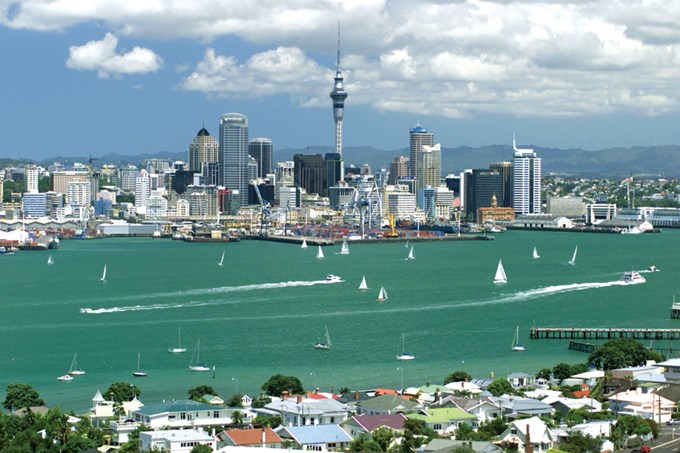The prospect of Auckland hosting the 2011 Rugby World Cup sparked debate that ultimately led to the region’s local government reorganisation. It’s fitting we mark the five years since amalgamation at the same time as the cup is raised high again.
The 2011 Rugby World Cup was the catalyst for Auckland Council to complete transport and infrastructure improvements, including Queens Wharf, Wynyard Quarter and rail station upgrades.
Pride in our place
Mayor Len Brown says the tournament also gave Aucklanders the perfect opportunity to show pride in their place and celebrate together.
“That sense of Auckland’s spirit and optimism has continued to characterise key achievements of the first five years, as more of the waterfront opened up, quality urban design came to the fore in numerous regeneration projects, and Aucklanders enjoyed a revitalised city,” he says.
A unified vision
Auckland’s vision became ‘the world’s most liveable city’, embodied in the Auckland Plan, the 30-year unified blueprint for how the region would reach its potential.
The mayor says Auckland’s combined financial strength and leadership clout has helped progress the big-ticket projects necessary to tackle the challenges of fast growth.
“However, we’ve also needed to balance investing in the future with working smarter to achieve best value for ratepayers’ money. We’re pleased that efficiency gains now represent $183 million per year in the five years since amalgamation.”
Following the Royal Commission on Auckland Governance, the new local government structure came into being on 1 November 2010: one council, with the mayor and a governing body of 20 ward councillors, seven (now six) council-controlled organisations and 21 local boards.
Meeting our diverse needs
Giving a voice to those under-represented and leveraging the richness of Auckland’s bicultural and multicultural make-up were priorities from the Royal Commission.
Len Brown says, “We partner with the Independent Māori Statutory Board to take the view of Māori into account in decision-making, and developed a responsiveness framework to help us deliver on Auckland Plan outcomes for Māori. Recently we added rainbow communities to our advisory panels for Pacific peoples, ethnic peoples, seniors, youth and disability.”
Auckland’s population rose by 132,000 in the past five years and is expected to reach 2.2 million by 2043. That growth reflects natural increase (births minus deaths) and net migration from overseas and other parts of the country.
Future-proofing our city
In Auckland’s evolving cityscape, streets and open spaces have been upgraded, such as St Patrick’s Square and Takapuna’s Hurstmere Green.
New shared spaces have proved a success including Fort Street and New Lynn’s Totara Avenue West. Significant public buildings have been renovated; one of them, Auckland Art Gallery, was named World Building of the Year at the 2013 World Architecture Festival.
“Along with building physical infrastructure, we’ve also undertaken initiatives that give Aucklanders more chances to improve their well-being and experience our amazing natural environment,” says Len Brown.
Ōtāhuhu has a new pool as part of a recreation precinct that includes a library. The Tepid Baths was restored to its former glory and Massey Park Pool and Mt Albert Aquatic Centre were revamped.
We opened Waitawa Regional Park and acquired land for new parks and for adding to existing parks – more than 620ha just in the past financial year.
“Looking ahead, we’ll be increasing our capital investment in Auckland to $1.8 billion over the next financial year, for a total of $18.7 billion over 10 years.
“When we reach the next five-year milestone, we’ll be well on the way to completing major initiatives like the City Rail Link, which leads a list of projects on track for a better Auckland for generations to come.”
The big issues: housing and transport
Mayor Len Brown says there has been sustained focus on providing integrated public transport to help overcome Auckland’s addiction to cars.
Fifty-seven new electric trains have been introduced, along with the AT HOP card across bus, rail and ferries.
Public transport patronage has jumped from 60 million in 2010 to 80 million in 2015.
“Housing also became a big concern for Aucklanders, who were worried about affordability, particularly for first-home buyers,” he says.
“We signed the Auckland Housing Accord with the government in 2013 to increase the supply of new homes. We’re looking good for meeting the three-year target of consenting 39,000 dwellings or sites by October 2016.”


